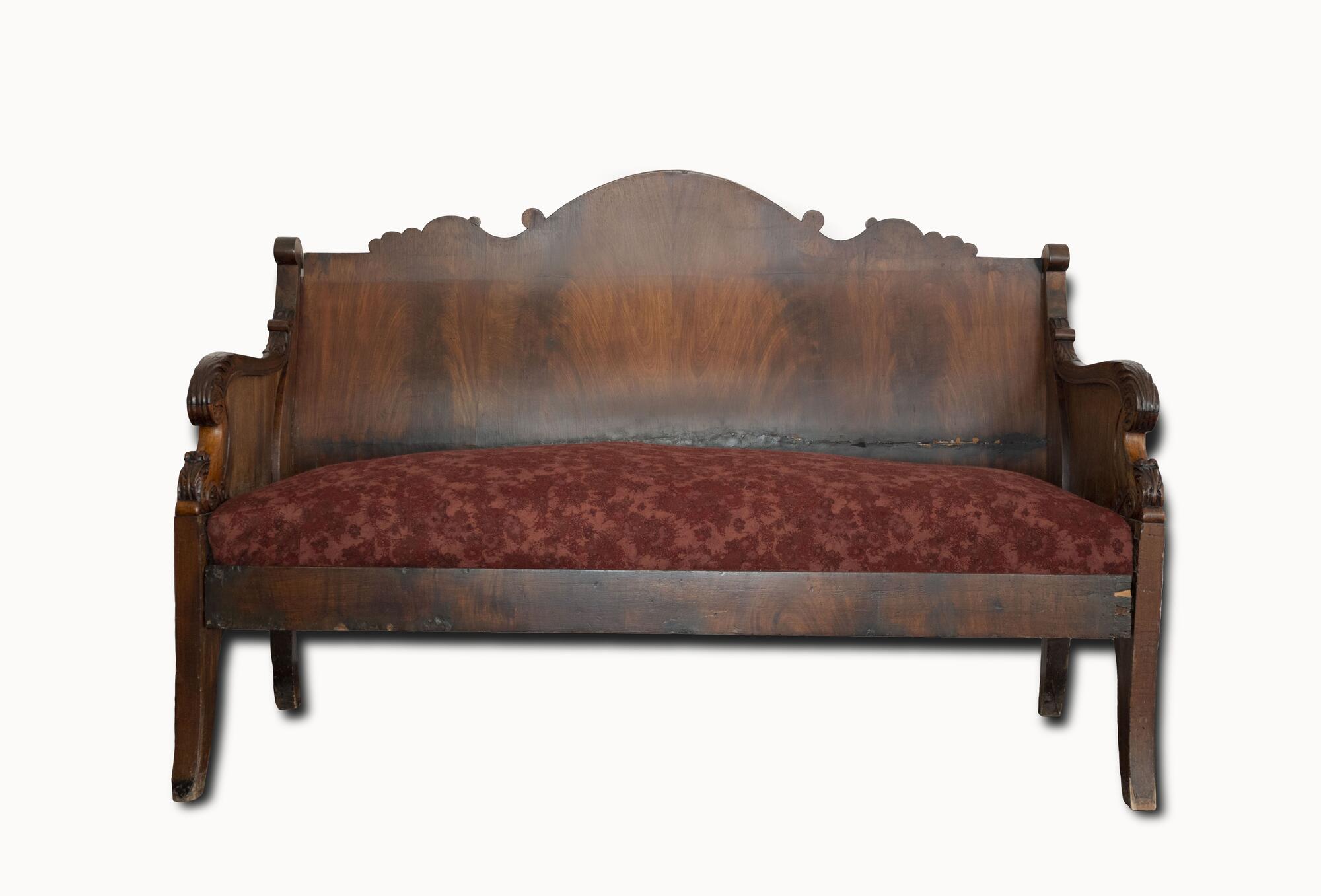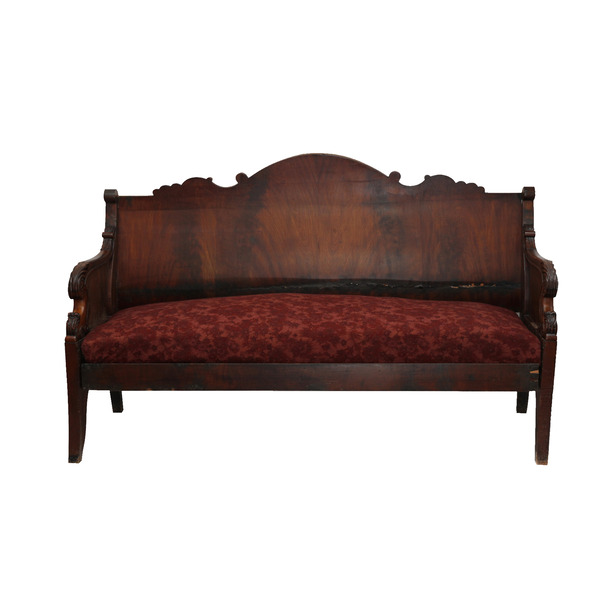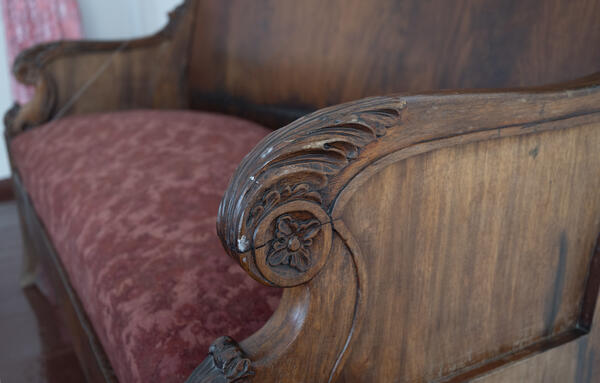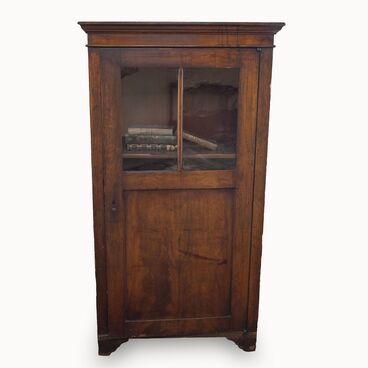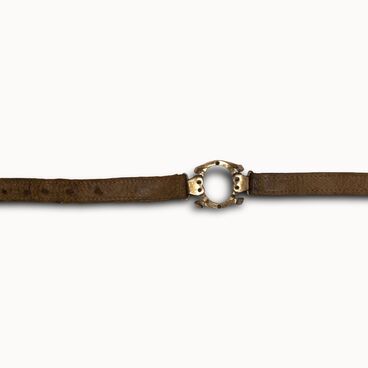This Empire-style sofa has a seat covered with colored dense fabric. The top and sides are decorated with carvings. The sculptured tight back is made of mahogany.
In the early 19th century, sofas played an important role in the interior of Russian homes. In some noble residences, there were even special sofa rooms.
Sofas had rectangular outlines, and their forms were impressive and grand. Instead of elbow rests, there were sidewalls with carved columns. Such sofas were supported by wide rectangular platforms or legs shaped like lion paws. Sofas were also made in the form of a boat or a wide armchair, and their carved elbow rests often resembled swans, lions, or sphinxes. The smooth surface of the backs and armrests was covered with a high-quality veneer made of mahogany or curly birch.
The sofa from the museum’s collection has a tight, slightly curved back, which means that it might have been made in Europe in the early 19th century. Foreign craftsmen used only mahogany, while Russian ones picked an alternative from other valuable wood species such as curly birch and walnut. The smooth armrests are embellished with very fine and detailed carvings showing a swirling leaf motif. The carved back is high and ornately shaped, with the perfectly visible fiery pattern of mahogany. The sofa is upholstered in luxurious velvet red material with a floral pattern. Red is one of the traditional bright colors for the Empire style, along with blue, white, gold, and various dark shades.
From 1800 to 1830, the interiors of imperial palaces, mansions of the aristocracy, and noble houses were characterized by the Russian Empire style, which speaks to the great influence of French art.
As a rule, the bright upholstery of sofas and armchairs was chosen to match the design of the walls. The pattern of upholstery was usually embroidered with wool or woven with gold threads. The demand was high for the upholstery with black-bordered scarlet cloth, silk with gold stars, or rosettes covering a mesh pattern. Saturated colors such as blue, yellow, purple, and crimson, as well as color combinations of white, blue and gold were quite in favor.
In the early 19th century, sofas played an important role in the interior of Russian homes. In some noble residences, there were even special sofa rooms.
Sofas had rectangular outlines, and their forms were impressive and grand. Instead of elbow rests, there were sidewalls with carved columns. Such sofas were supported by wide rectangular platforms or legs shaped like lion paws. Sofas were also made in the form of a boat or a wide armchair, and their carved elbow rests often resembled swans, lions, or sphinxes. The smooth surface of the backs and armrests was covered with a high-quality veneer made of mahogany or curly birch.
The sofa from the museum’s collection has a tight, slightly curved back, which means that it might have been made in Europe in the early 19th century. Foreign craftsmen used only mahogany, while Russian ones picked an alternative from other valuable wood species such as curly birch and walnut. The smooth armrests are embellished with very fine and detailed carvings showing a swirling leaf motif. The carved back is high and ornately shaped, with the perfectly visible fiery pattern of mahogany. The sofa is upholstered in luxurious velvet red material with a floral pattern. Red is one of the traditional bright colors for the Empire style, along with blue, white, gold, and various dark shades.
From 1800 to 1830, the interiors of imperial palaces, mansions of the aristocracy, and noble houses were characterized by the Russian Empire style, which speaks to the great influence of French art.
As a rule, the bright upholstery of sofas and armchairs was chosen to match the design of the walls. The pattern of upholstery was usually embroidered with wool or woven with gold threads. The demand was high for the upholstery with black-bordered scarlet cloth, silk with gold stars, or rosettes covering a mesh pattern. Saturated colors such as blue, yellow, purple, and crimson, as well as color combinations of white, blue and gold were quite in favor.
